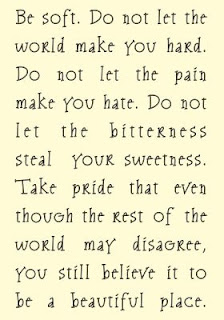The Centre for Research on Multinational Corporations (SOMO)
written by Staff
January 24, 2017
Garment brands contribute to low wages, long working hours, child labour and school dropouts in Bangladesh.
Stop Child Labour and SOMO have published the report ‘Branded Childhood’. Read here the press release from Stop Child Labour:
The average worker in the Bangladeshi garment industry is getting paid only one third of what is considered to be a living wage. Low wages and long working hours have been found to play a key role in parents’ decisions to take their children out of school and let them work in various jobs. Many international garment brands, including (but not limited to) H&M, C&A, Esprit, Marks & Spencer, GAP, VF Corporation and Kmart Australia, contribute to this situation.
These are important findings of the report Branded Childhood that has been published by Stop Child Labour and SOMO today. Almost 50% of the textiles produced in Bangladesh are exported to the European Union. International brands and retailers should therefore play a key role in ensuring that the rights of all workers and their children are respected.
Indirect child labour
There are still more than 3.5 million children working in Bangladesh, aged 5 to 17 years old. The highest concentration of child workers is found in Dhaka Division, where an estimated 690,000 children are engaged in child labour.
Child labour at export-oriented garment factories in Bangladesh has been substantially reduced over the past few years, in part due to the buying companies’ zero tolerance policies. However, this report focuses on a more hidden aspect of child labour. The research report interviewed 75 workers with children; these workers were working in 14 different factory units producing garments for the international market.
The working children featured in the report are not part of the buying companies’ supply chains but are the children of the garment workers. They are working at home or in other companies, sometimes in entirely different sectors. Workers receive low wages and experience long working days and this – without doubt – contributes to the low school attendance and child labour of their children.
“The responsibility of companies to address child labour also extends to ‘indirect child labour’, to which low wages and excessive working hours are important contributing factors. Therefore, companies should assess the impact of their purchasing practices and the consequences for the workers and their children”, says Gerard Oonk, senior advocacy officer of Stop Child Labour.“The various disturbing stories in the report make it clear that urgent action is needed and companies should quickly work towards the payment of a living wage that enables adult workers to meet their basic needs.”
Larger group of brands should act
Many international garment brands and retailers have their products made in Bangladesh, although the report only mentions seven European and US brands and retailers. These companies were identified as buyers from the investigated factories through the companies’ public supplier lists, as well as by analysing shipment data.
There is a much larger group of brands and retailers who are sourcing from the investigated factories. The responsibility to address the labour rights issues therefore does not only lie with the brands and retailers mentioned in this report.
Stop Child Labour and SOMO urge all companies sourcing from Bangladesh to take adequate measures to provide a living wage and good working conditions to workers in their supply chain, enabling their children to attend school and enjoy their childhood.
The Guardian, UK
written by Michael Safi
Wednesday December 7, 2017
Most mornings, 15-year-old Iqbal arrives for his job at a Dhaka panel beaters at about 10am, working on cars for up to 13 hours before he can go home.
The teenager, who earns less than £60 a week, has been working these hours since the age of 12, when his family’s financial problems forced him out of school and into a full-time job.
A major study released on Wednesday suggests his case might be typical of Bangladesh’s poorest young people. A survey of 2,700 slum households (pdf), carried out by the Overseas Development Institute, found that child labourers living in slums worked an average of 64 hours each week – many in supply chains connected to the world’s most popular brands.
The survey, among the largest conducted in the south Asian country, found 15% of children aged between six and 14 did not go to school and worked full-time.
Two-thirds of girls from slum areas who were working full-time were employed in Bangladesh’s $30bn (£24bn) clothes manufacturing industry, which is one of the world’s largest despite an extremely poor safety record.
The manager of one unnamed garment factory told researchers that, while he was aware children aged 11 and 14 should not be working, he did not regard their employment as illegal. He also admitted that many of his employees did not carry identification cards that would verify their age.
There was no immediate comment from Bangladesh authorities or its powerful garment manufacturers, but union leaders said child labour in factories was rampant.
The extent of child labour in Bangladesh’s textile industry was laid bare in July when a nine-year-old boy was brutally killed at one of the largest spinning factories.
Police probing the case said they found a quarter of the workforce at the factory outside Dhaka were children.
International brands have been part of the push to eradicate child labour and improve safety standards in factories since the 2013 Rana Plaza collapse that killed 1,135 people.
But the chief executive of Save the Children, Kevin Watkins, who co-authored the report, said that – given the number of children working in the industry – it was “implausible to believe that there isn’t significant pollution of the value chains of large-scale, western companies”.
“Many of these girls are not in the biggest factories in the formal sector, but they’re certainly in the supply chains of those factories,” he said.
Global Development - The Guardian Is child labour always wrong? The view from Bolivia – podcast
Kary Stewart looks at why 850,000 children work in Bolivia, and whether the numbers can be vindicated by the country’s unique cultural context
Listen
Components of textile manufacturing such as sewing buttons were sometimes contracted out by the large factories to smaller workshops, over which government scrutiny was likely to be poor or non-existent, Watkins said.
“There are very significant levels of child labour in products that end up in retail outlets in the UK and elsewhere.”
The study also found that more than 36% of boys and 34% of girls said they had experienced “extreme fatigue” on the job. It said that families were usually keen for their children to remain in school, but were unable to afford to live without the extra income, albeit meagre.
Iqbal’s father said he was “very much worried and tense” about his son’s future and wished the teenager could continue his education. The boy felt the same way after he first dropped out of school, but said three years in the workforce had changed his perspective.
“Even if I got the chance to study I probably wouldn’t,” Iqbal said. “I have no interest any more.”





































No comments:
Post a Comment